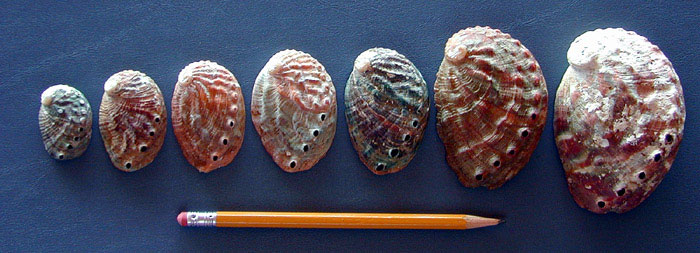 |
| I know, I know, it's been a hot minute. Life happens, right? |
Hello, science enthusiasts! Hello,
animal lovers! Hello, conservationists! Here's your sixth stream of
bubbles containing interesting information from this little corner of
the California coastline. I'm Shelby, and I'm here to offer some
insight on the health and function of some of the most important
features of Northern California's coastal ecosystems—late, I know.
I've talked in previous posts mostly
about the problems facing our kelp forest ecosystems today, and about
how those problems came around. But I realize that I haven't talked
much about possible solutions to these problems. What is currently
being done about the transition these environments have taken from
one stable state to another? Well, in an effort to stop continuing to
sound like a complaining scientist who doesn't actually do anything,
I'll do my best to explain exactly what the people operating in this
field are doing to try and stabilize these crucial food webs.
Because, despite what some people might think, efforts are being
made.
| It's not all bad...I swear. |
Unfortunately, there's only so much
that can be done about the abalone themselves. Right now, all they
can do is hunker down and wait these starvation conditions out. The
CDFW has closed the fishery, removing humans as a possible threat to
the abalone. The fishery is expected to stay closed at least until
2021. They're in a delicate situation right now; the best that can be
done right now is to leave them alone. We can't do much to help the
sunflower stars either; scientists still haven't figured out what
kind of disease wasting syndrome is—whether it's bacteria, or a
virus, whatever—so there isn't any way for human interference or
treatment. More research is needed on that front.
| No flu shot for this yet. |
Purple urchins, on the other hand, are
the forefront of active management right now. Their natural predators
are down, so they've been operating pretty much unimpeded in Sonoma
and Mendocino County. Now, I don't mean to make it sound like the
urchins are sinister or anything; they're just doing what any other
species does when the usual pressure it experiences from predators.
If there's nothing around to eat you, you're free to eat and breed on
a much more successful rate (humans have been doing that since the
Pleistocene epoch). So, a CDFW along with a coalition of scientists
and stakeholders, known as KELPRR (Kelp Ecosystem and Landscape
Partnership for Research on Resilience) have decided to take measures
needed to address the issue of the purple urchin blooms. These
efforts have included collaboration with commercial and recreational
urchin divers.
| These little spiky balls of death we actually can do something about. |
One effort made to combat the purple
urchin numbers is the institution of an increase in daily bag limits
for urchin divers (both commercial and recreational). The original
law for urchin harvest was 35 individuals per bag—a regulation that
applies to general invertebrate take—but with this shift has taken
place, and emergency regulations were put into place to increase the
bag limit to 20 gallons. This limit was supposed to be in place from
April 2018 to November 2018; I don't know if the limit is still in
effect. KELPRR also organized large group efforts to remove purple
urchins en masse, such as the removal events in Ocean Cove—which
took place in May—and in Albion—which took place in July. These
were open to both commercial and recreational divers. Since the first
harvest, an estimated 200,000 purple urchins have been removed. These
large scale removal events could take place again this year if the
numbers haven't decreased. Removing the urchins will remove them as a
source of pressure on algae, thereby allowing bull kelp spores to
settle and grow on the available rock.
| People use whatever tools they have at their disposal to collect the urchins. https://www.pressdemocrat.com/lifestyle/8353809-181/north-coast-divers-take-the |
A member of the KELPRR coalition, the
Noyo Center for Marine Science, has been working especially closely
with commercial red urchin divers. Since the red urchin fishery has
also experienced collapse during these starvation periods, the Noyo
Center has enlisted commercial divers who would otherwise not be
working. Since they use SCUBA gear, they can stay under water longer
and collect more purple urchins at a time. In 2018, these commercial
divers removed an estimated 1.2 million purple urchins from the most
affected areas.
| Commercial urchin divers can legally use SCUBA gear to harvest urchins, so they can get a lot more done during a removal effort. Source:https://oceanleadership.org/kelp-forest-restoration-project-begins-off-southern-california-coast/ |
In an effort to generate lost revenue
(see previous posts) and encourage an interest in a market for purple
urchins, KELPRR has partnered with a Norway-based company called
Urchinomics, already operating in Canada and Japan. Urchinomics has a
goal of instigating a regular practice at urchin barren sites, where
purple urchins are harvested, taken back to special aquaculture
(marine-farming) facilities to be fed and fattened up, and then sold
for their gonads at fish markets. This could remove enough urchins to
allow kelp forests to recover, while also putting the urchins to use
rather than simply trashing them. The only reason purple urchins have
never had much of a market here is because the urchins harvested in
Southern California always had little meat on them and didn't taste
very good. Turns out, they didn't taste good is because all they ate
was sea grass; it makes them bitter. The urchins up here eat kelp,
which has more protein in it, so they're sweeter and have more umami
quality. Urchinomics is hoping to set up shop in Bodega Bay, to bring
more of a market to local Northern California purple urchin
harvesting.
 |
| Urchinomics help turn urchins from this....(https://www.cbc.ca/news/canada/british-columbia/sea-urchin-farming-canada-1.3930965) |
 |
| ...to this! Source: https://www.vikebladet.no/naeringsliv/2016/11/15/Norsk-canadisk-kr%C3%A5kebolle-samarbeid-13792905.ece |
These efforts can help in the long
run, but it is unfortunate they're only being instilled now, when
conditions are so dire. It's brought the reality of climate change
into the light for a lot of people; we can see it. Now we can only do
our best as scientists.
I hope this series on the issues
currently facing the abalone fishery. If you'd like to learn more
about the problem, and if you'd like to know how you can help, visit
NoyoCenter.org and click on “Help the Kelp”. I'm hopefully going
to eventually find a way to raise money to donate to the Noyo Center,
since they're one of the main nonprofits working on the KELPRR
coalition and they're on the front lines of this problem. When I
eventually get my collective sh*t together and figure out something,
I hope I can count on you guys to help me donate to these guys.
 |
| Check these guys out, they're great! Source: https://noyocenter.org/ |
This has been a long and important
project, but I'd like to keep continuing educating people on a
citizen science level. I'm going to be holding a poll on my Facebook
page about what kind of topic people would like to see me cover next.
Spoilers: I'm definitely going to be doing a thread on scientific
inaccuracies in kids' movies, but I haven't decided if I want to do
that next or after something else.
 |
| I'll give you a hint; these motherf*ckers will definitely make an appearance on this blog. |
Stay curious.
 |
| "Sea" you later! |























